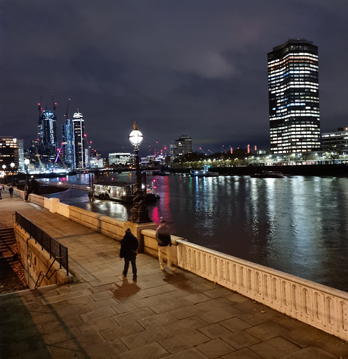Rates of offending are strongly associated with different measures of deprivation and poverty, including areas where people are most likely to struggle to access food. Statistical modelling found absence rates from secondary school were also a significant factor in predicting the [London] boroughs with the highest rates of offending for serious violence. That’s among the findings of a report – Understanding serious violence among young people in London – by the Greater London Authority’s (GLA) Strategic Crime Analysis team and MOPAC Evidence and Insight Team.
For the report and accompanying data visit the GLA website.
Young Black Londoners are disproportionately more likely than young white Londoners to be victims for all types of serious violence, the GLA’s City Intelligence Unit found. As with knife crime, 95 per cent of those accused of gun crime were male. Unlike other violence types these offences were more likely to take place outside the offender’s home borough.
The document concluded that ‘violence rates can be predicted by a number of factors at an area level relating to benefit receipt, health, food, employment and living environment. These provide evidence that the disproportionality seen in the descriptive analysis of the characteristics of young people involved in violence, can be significantly explained by the characteristics of the areas in which they grow up, and are more structural in nature’.
Meanwhile in a speech, Mayor of London Sadiq Khan said the GLA was ‘redoubling our efforts to reduce violence as we recover from the pandemic’. He harked back to the New Labour 1990s slogan, saying: “The old mantra rings truer today than ever:that we must be both tough on crime and tough on the complicated causes of crime.”
He said: “A crucial part of the solution is always going to be supporting the police to bear down relentlessly on criminality, which I will continue to do. But we must be both tough on crime and tough on the causes of crime. Because the truth is we know there’s a complex set of factors at play in people’s lives, homes and communities, which can alter the likelihood of someone taking the wrong path and getting involved in violence.
“The vast majority of young Black Londoners are not involved in violence in any way. But young Black Londoners are significantly more likely to be a victim or a perpetrator of serious violence. That’s because it’s not skin colour that determines your chances of being a victim or an offender, but societal and economic factors, such as the disproportionate rates of poverty, unemployment and school exclusions that affect Black lives.
“When I highlight these conditions associated with violence, I’m not excusing criminality in any way. But any sensible society understands that it’s in our own interest to remove the conditions that allow criminality to thrive.”
Photo by Mark Rowe; Thames from Albert Embankment, winter evening.









